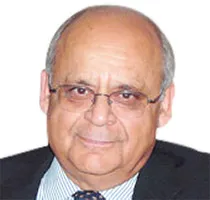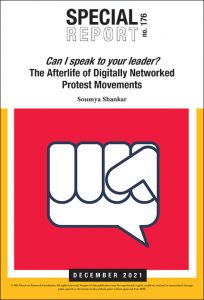"In a burst of enthusiasm for the country, or panic about the approaching elections, the government took a brave but unrealistic decision some six months ago to accelerate the clearance of pending infrastructure projects that had been lying around in various ministries. The last date for finalisation was fixed as August 15 for many of these seventeen projects.
It now turns out that nine of these projects have not even crossed the preliminary stage of request for qualification.
Some of these projects are the Eastern Peripheral Expressway and the M u m b a i V a d o d r a Expressway. The ultramega power projects in Orissa and Tamil Nadu too have missed the deadlines.
As expected, nodal officers in the ministries dealing with these projects had been appointed who were to report on a weekly basis.
Nothing happened, in true Indian tradition.
The writing was on the wall for quite some time and in its report released in June 2012 the RBI had commented that "envisaged investment in infrastructure declined by 52 per cent to `1 trillion from `2.2 trillion in 2012, with power and telecom accounting for most of this fall. Investment in telecom sector has dried-up, while that in roads, ports and airports has also decelerated sharply. This has had a ripple effect on the economy." Compare this with some of the infrastructure projects the Chinese are pursuing. There is an old Chinese saying that if you want to be rich then you must build roads. Well, not just roads, but ports, bridges, tunnels, dams, nuclear power plants, gas and oil pipelines, airports, railway lines and stations.
All these one hundred odd mega infrastructure projects ranging from $102 million to $1 trillion that include ongoing, or completed projects both in China and in other countries, notably Africa.
They range from $2.2 billion Qinshan nuclear power plant, to $62 billion for a south to north water diversion project that is expected to divert 44.8 billion cubic metres of water by 2050, to the $1 trillion on the Tianjin Binhai New Area Investment. The total worth of these and several other projects is nearly $4 trillion.
The Silk road along with pipelines from Central Asia to China and highways to Europe through Central Asia will have considerable Chinese investment.
China will soon be the prime economic power in Central Asia and therefore the most influential leaving the Russians and the Americans behind.
The Chinese have cultivated the Central Asian regimes assiduously since the time Li Peng first visited the region in 1994, followed by Jiang Zemin and Hu Jintao in later years. President Xi Jinping was the latest Chinese President to visit four Central Asian republics.
Turkmen and Kazhak gas now flow into China. By 2020 about 65 billion cubic metres of gas will flow into China. We have nothing even vaguely similar at a much lower scale that indicates our determination to improve our infrastructure that would be the basis for our growth this century. Instead of creating opportunities for our teeming population and capitalising on our demographic dividend we have launched schemes that only create vested interests and are a premium for not working or making progress.
Thus while India will be spending its money on poverty alleviation through entitlements, China has sought to remove poverty through infrastructure projects that pay for working and not through merely the right to earn without having to work.
India boasts 600 universities and 35,000 colleges yet many of them do not make the grade by our own standards, not one of them figures in the top 200 list of world's universities, not even our prestigious IITs and IIMs.
No wonder we spend $10 billion annually on educating our children abroad.
China has five in this list. Fifteen Chinese universities figure in the top 100 list in Asia; we have two.
China's declared military budget for 2012 crossed $100 billion marking an 11 per cent increase. In comparison, the Indian budget was $40 billion before the collapse of the rupee and this would hurt at a time when most of our capital expenditure is on imports.
China spent $296.8 billion on R&D in 2012 compared to a mere $36.1 billion we spent in 2011. China has established 500,000 vocational schools for mid level skills, we have only 11,000 and this is where real power lies -the power to keep a people employed and, possibly, happy . By some estimates, 500 million young will be in the skills and jobs market in the next decade in India -a huge figure by any calculation. Our trade deficit with China is embarrassing and our industrial and manufacture base remains a mere 16 per cent of our GDP which prevents any major breakthrough. In the latest WEF Report for 2012, we fare poorly in all social infrastructure (health, education, social security) indicators, way below the Chinese. On the one hand, we agonise about China's plans to encircle us through Pakistan and other countries in the neighbourhood, but then let OVL and GAIL participate in the construction of a $4.3 billion oil and gas pipeline from Kyaukpyu in Burma to Yunnan to supply energy to China.
We might as well participate in the construction of similar pipelines in Pakistan or in the development of Gwadar for Chinese use.
When Sri Lanka sought our assistance to redevelop Hambantota we showed no interest but got alarmed when the Sri Lankans opted for Chinese assistance.
Instead of setting our house in order and taking advantage of the free world, we locked ourselves in and for nearly 50 years did nothing, absolutely nothing to develop our infrastructure and the economy in the north east for fear that we would be run over again by the Chinese.
When the opportunities came our way, a blurred vision and diffidence held us back and we have not much time left.
The external balance is changing fast with new equations being worked out. We need to set our house in order - refurbish our political apparatus, rebuild the crumbling state of our institutions and reorient and revamp our governance capacities.
Above all, we need to provide skills and high-end education.
Courtesy: The Asian Age , 18 OCtober 2013
"
The views expressed above belong to the author(s). ORF research and analyses now available on Telegram! Click here to access our curated content — blogs, longforms and interviews.




 PREV
PREV

